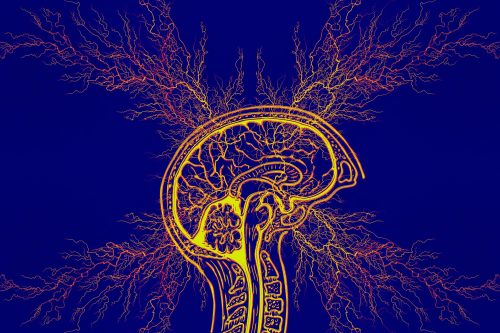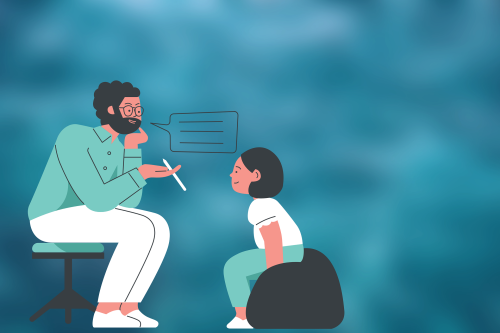Autism Spectrum Disorder (ASD) is a neurodevelopmental condition that affects communication, social interaction, and behavior. It is a complex condition that can have a profound impact on individuals, families, and communities. While there is no cure for autism, early intervention and therapy can make a significant difference in the lives of individuals on the autism spectrum. This article aims to provide an overview of autism, its symptoms, and the various treatment options available to individuals on the autism spectrum.

What is Autism Spectrum Disorder (ASD)?
Autism Spectrum Disorder (ASD) is a neurodevelopmental condition that affects communication, social interaction, and behavior. It is a spectrum disorder, meaning that it affects individuals differently and to varying degrees. Some individuals with autism may have mild symptoms, while others may have severe symptoms that significantly impact their daily lives.
Symptoms of Autism Spectrum Disorder (ASD)
The symptoms of autism can vary greatly between individuals, but the following are common signs of autism:
- Communication difficulties: Individuals with autism may have trouble expressing themselves, both verbally and non-verbally, and may struggle to understand what others are saying to them.
- Social interaction difficulties: Individuals with autism may have trouble making and maintaining social connections with others. They may have difficulty understanding social cues, such as body language and tone of voice, and may struggle to initiate and participate in social interactions.
- Repetitive behaviors: Many individuals with autism engage in repetitive behaviors, such as hand-flapping, rocking, or repeating certain words or phrases. These behaviors can be a way for individuals with autism to manage stress or anxiety.
- Sensory sensitivities: Individuals with autism may have heightened sensitivities to certain sensory experiences, such as sound, light, and touch. They may find certain sounds, textures, or lights to be overwhelming, and may avoid or seek out certain sensory experiences.
- Restricted interests: Individuals with autism may have highly focused interests in a specific topic or object, to the exclusion of other interests.

Diagnosing Autism Spectrum Disorder (ASD)
Diagnosing autism can be a complex and time-consuming process. It typically involves a comprehensive evaluation by a multidisciplinary team of healthcare professionals, including a pediatrician, psychologist, and speech-language therapist. The team will consider the individual’s medical history, developmental history, and current symptoms to make a diagnosis.
Treatment Options for Autism Spectrum Disorder (ASD)
The good news is that there is a range of effective treatments available for autism, especially if you’re coping with a partner’s ASD, or children’s ASD. Early intervention is key, as the brain is most receptive to change during the early years of life. The following are some of the most commonly used treatment options for autism:

Behavioral and Developmental Therapies
- Applied Behavioral Analysis (ABA): ABA is a widely used and evidence-based therapy for individuals with autism. It involves breaking down complex skills into smaller, more manageable steps and teaching them through repetitive practice and positive reinforcement. ABA therapy is often delivered one-on-one, and can target a range of skills, including communication, social interaction, and adaptive behaviors.
- Occupational Therapy: Occupational therapy can help individuals with autism develop the fine motor skills and coordination necessary for everyday activities, such as dressing, eating, and writing. It can also help individuals with autism develop their sensory processing abilities and manage sensory sensitivities.
- Speech-Language Therapy: Speech-language therapy can help individuals with autism improve their communication and social interaction skills. Speech-language therapists may work on building an individual’s vocabulary, improving their ability to understand and use language, and teaching them social skills, such as taking turns in conversation and making eye contact.
- Developmental Therapy: Developmental therapy focuses on helping individuals with autism reach their developmental milestones and improve their overall functioning. It may involve a combination of play-based activities and structured therapy to help individuals with autism develop their cognitive, motor, and social skills.
Medications
While there is no cure for autism, medications can help manage some of the symptoms associated with the condition. The following are some of the most commonly used medications for individuals with autism:
- Antipsychotics: Antipsychotics can be effective in managing behavioral symptoms, such as aggression and self-injury.
- Selective Serotonin Reuptake Inhibitors (SSRIs): SSRIs can help manage symptoms of anxiety and depression, which are common in individuals with autism.
- Stimulants: Stimulants, such as Ritalin and Adderall, can help improve attention and focus in individuals with autism.
- Vitamin and Mineral Supplements: Vitamin and mineral supplements, such as Vitamin B6 and magnesium, have been shown to help manage some of the symptoms of autism, such as hyperactivity and impulsivity.
Complementary and Alternative Therapies
There are a number of complementary and alternative therapies that are commonly used by individuals with autism, including:
- Music Therapy: Music therapy can help individuals with autism improve their communication, social, and behavioral skills. It can also help them manage stress and anxiety and improve their overall mood.
- Art Therapy: Art therapy can help individuals with autism express themselves and develop their creativity. It can also help them improve their fine motor skills and manage sensory sensitivities.
- Equine Therapy: Equine therapy, also known as horse therapy, can help individuals with autism improve their balance, coordination, and motor skills. It can also help them develop their social skills and build self-esteem.
- Massage Therapy: Massage therapy can help individuals with autism manage stress and anxiety, improve their sleep, and boost their overall mood.
Conclusion
Autism Spectrum Disorder (ASD) is a complex condition that affects individuals differently and to varying degrees. While there is no cure for autism, early intervention and autism spectrum therapies can make a significant difference in the lives of individuals on the autism spectrum.
From behavioral and developmental therapies, to medications and complementary and alternative therapies, there are a number of effective treatment options available to individuals with autism. The key is to work with a multidisciplinary team of healthcare professionals to develop a personalized treatment plan that meets the individual’s specific needs and goals. With the right support and resources, individuals with autism can lead fulfilling and meaningful lives.